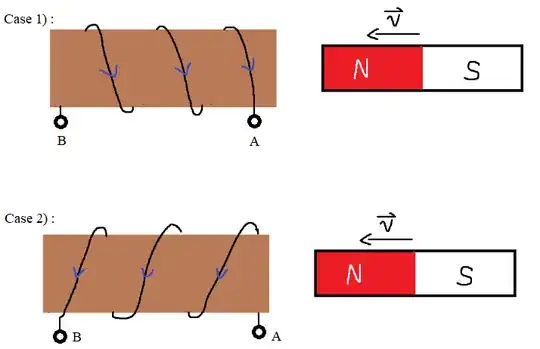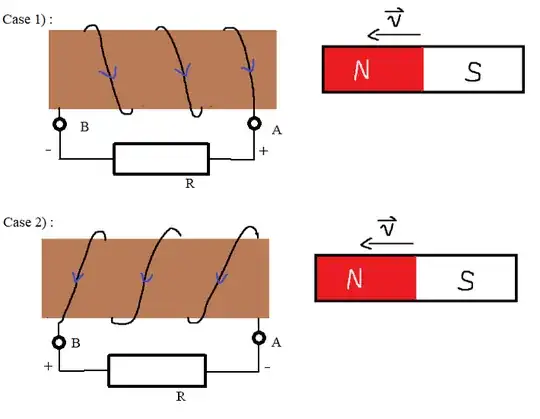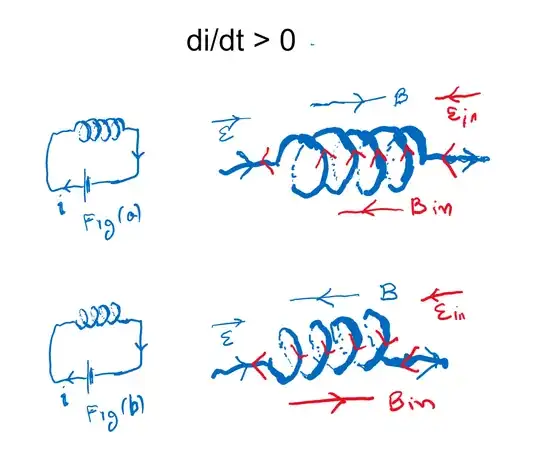In Case 1) and Case 2) (see the image below) induced current is flowing counterclockwise (from the magnet's POV) if we move the magnet towards the coil (and the circuit is closed, obviously).
However I'm not so sure about the direction of the induced voltage. Can you please explain to me that in Case 1) and Case 2) which end of the coil will be more positive, A or B?
Thanks for the explanation in advance!
Side note: This is a question I asked at Electrical Engineering StackExchange, but nobody there could answer it, so I guess it is more related to Physics.


